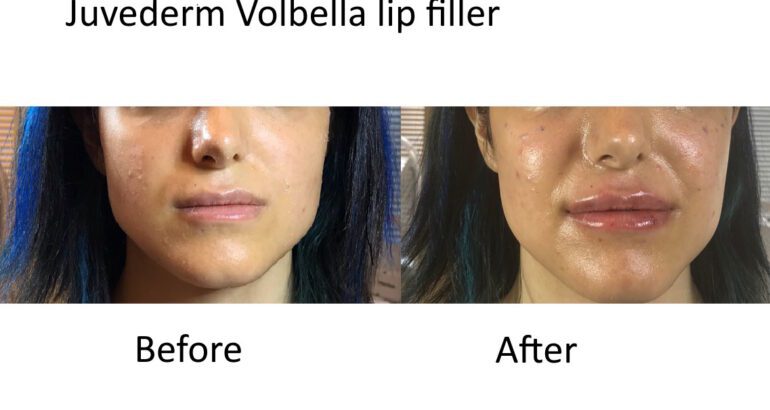Botox, derived from the Botox Cosmetics product line, employs a refined botulinum toxin type A variant. It finds widespread use in medical and aesthetic procedures, temporarily dampening muscle activity, resulting in varied effects depending on the purpose. Here are some prevalent applications of Botox: Treatment for Facial Wrinkles and Fine Lines: Botox is commonly employed to mitigate facial wrinkles and lines arising from muscle contractions. Glabellar Lines: The furrows appearing between the eyebrows during frowning. Crow’s Feet: Delicate lines encircling the outer corners of the eyes. Forehead Lines: Horizontal lines that manifest on the forehead. Medical Utilizations: Hyperhidrosis/Excessive perspiration in the underarm region. Strabismus/Misalignment of the eyes. It holds the potential to effectively address diverse muscle spasms, including Cervical Dystonia/Spasms in the neck muscles. Blepharospasm/Involuntary contractions of the eyelid muscles. Spasticity/Muscle rigidity and spasms, are often observed in conditions like cerebral palsy or post-strokes. Chronic Migraine/Recurrent migraine headaches in adults. Overactive Bladder/Urinary incontinence. There exist several compelling factors that prompt individuals to contemplate Botox treatments. It is a cosmetic procedure involving the injection of a refined variety of botulinum toxin type A, which proffers an array of advantages for both aesthetic and medicinal intentions. Below are common rationales driving individuals to consider this treatment: Wrinkle Mitigation: This product enjoys popularity in diminishing fine lines and wrinkles in regions susceptible to muscle activity, including the forehead, between the eyebrows, and around the eyes. Rejuvenated Appearance: It can soften wrinkles and reinstate a smoother complexion, contributing to a more youthful visage. Prophylactic Measures: As a preemptive maneuver, some individuals embrace this treatment earlier to stave off the emergence of deeper wrinkles. Confidence Enhancement: Enhancing physical appearance through Botox can invigorate self-assurance and foster a positive self-image. Non-Invasiveness: Botox is esteemed for being a favored non-invasive cosmetic procedure. Efficiency and Swiftness: Botox sessions seamlessly integrate into bustling schedules, often requiring only a few minutes. Minimal Recovery Time: It’s essential to abstain from reclining or massaging the treated area for six to eight hours post-Botox, as this could lead to unintended spreading. Post-treatment, resuming daily activities promptly is feasible. The typically minimal or non-existent downtime is a welcomed aspect of this treatment. Tailored Outcomes: Proficient practitioners adeptly tailor Botox interventions to yield results that harmonize with the distinctive features of each individual, culminating in a natural appearance. Medical Applications: Beyond aesthetic utility, this product finds versatile applications in addressing medical concerns, such as muscle spasms, migraines, excessive perspiration (hyperhidrosis), and select bladder and ocular conditions. Transient Effects: Botox outcomes endure temporarily, commonly lasting around 3 to 4 months. This temporal nature appeals to those curious about cosmetic procedures yet reluctant to commit to irreversible transformations. Acknowledging that each person’s incentives for contemplating this treatment can be highly personalized is pivotal. Should this procedure intrigue you, seeking counsel from a qualified healthcare provider or medical expert is advisable. Their evaluation of your objectives will guide whether Botox aligns with your circumstances. Prioritize Blood Thinner Avoidance: Avoid blood-thinning medications and supplements before treatment to mitigate the risk of bruising and bleeding. Always consult your healthcare provider before discontinuing any prescribed medications. Abstain from Alcohol: To minimize the likelihood of bruising, it’s recommended to abstain from consuming alcohol for several days leading up to your treatment. Stay Hydrated: Ensuring ample hydration by consuming plenty of water before your appointment fosters skin health and healing. Mindful Skin Care: On the day of your treatment, opt for a makeup-free and clean skin canvas, especially in the designated treatment zones. Transparent Communication with Your Provider: During your consultation, share details about your medication regimen, medical history, or previous cosmetic procedures with your provider. This transparency enhances your safety and aids in crafting an informed treatment strategy. Allergy Acknowledgment: Notify your provider about any allergies, particularly if you’re allergic to components found in Botox. Comprehensive Medical History: When embarking on Botox treatments, supplying a comprehensive medical history is essential. This should encompass neuromuscular conditions like myasthenia gravis or Lambert-Eaton syndrome, as these factors may impact your eligibility. Considerations for Pregnancy and Breastfeeding: If you’re pregnant, planning to conceive, or currently breastfeeding, consulting your healthcare provider before scheduling a Botox treatment is crucial. The full scope of Botox’s effects on pregnancy and breastfeeding remains under study. Opt for Comfortable Attire: Wearing comfortable clothing that affords easy access to treatment areas, if needed, is advisable. Contemplate Icing the Treatment Area: To reduce post-treatment bruising, contemplate icing the area for at least 20 minutes before your appointment. Wrap an ice pack in a towel and apply it to the designated region. Realistic Expectations: While neurotoxin treatments can diminish wrinkles and signs of aging, outcomes and experiences may vary. Maintenance through follow-up treatments is necessary for sustained benefits, and it’s noteworthy that some discomfort or redness may occur post-injection. First Appointment Jitters: Initial apprehension is natural, but rest assured that this procedure is safe, minimally invasive, and accompanied by minimal discomfort. Following a neurotoxin treatment, avoiding touching the treated area or injection sites is imperative. This precaution prevents the neurotoxin from migrating to unintended facial areas, potentially leading to issues like drooping eyelids or swelling. As most practitioners advise, abstain from touching your face for at least six hours after the appointment. To optimize your results, maintaining an upright posture for four hours immediately after the procedure can prevent the neurotoxin from dispersing to other facial regions. Allow a minimum of four hours before engaging in physical activities, while it’s generally recommended to wait 24 hours before participating in vigorous exercise or workouts. Moreover, avoiding blood-thinning substances such as aspirin post-neurotoxin treatment is vital to ensure a safe and effective recovery. If you smoke after your neurotoxin treatment, it can diminish the longevity of your outcomes. Non-smokers typically experience longer-lasting results when addressing perioral wrinkles. Choosing not to smoke enhances your prospects of achieving superior and more enduring anti-aging effects. Smoking following neurotoxin treatment can hasten the fading of results and even counteract the treatment’s benefits. Numerous patients quit smoking after neurotoxin treatment due to the presence of skin-aging-accelerating chemicals in cigarette smoke, coupled with other health concerns. Both before and after a neurotoxin treatment, it’s prudent to abstain from consuming alcohol, as it can thin the blood and potentially lead to complications, akin to the effects of blood-thinning medications. Consuming alcohol after the treatment could amplify the risk of bruising. Partaking in alcohol before or after injections may render patients more susceptible to significant bleeding at the injection site. Following neurotoxin injections, refraining from facial treatments and massages for a week is paramount. This is because facial massages can disrupt the distribution of neurotoxins on the face, causing unintended migration. For at least four hours after the treatment, avoiding applying pressure to your face or receiving any facial massage is crucial. Furthermore, many facial treatments incorporate potent chemicals that can interfere with neurotoxin injections. Therefore, it’s advised to abstain from facials, masks, and chemical peels for at least one week after the procedure. If you’re contemplating a facial treatment, inquire about the recommended waiting period post-neurotoxin appointment. Adhering to this advice reduces the likelihood of complications. Neurotoxins can diminish facial wrinkles, lines, and creases. Their impact typically endures for three to four months; however, factors like sun exposure, smoking, and alcohol consumption can influence their longevity. It’s advisable to seek counsel from your physician regarding scheduling appointments and potential touch-ups. Botox results start showing up one week after the treatment. The neurotoxin results will show completely in 2 weeks after your treatment. Depending on the individual, these results will usually last between two to five months. Dysport and Botox are widely embraced cosmetic treatments that leverage botulinum toxin to temporarily reduce wrinkles and fine lines, promoting a more youthful appearance. Here are several distinguishing factors between Dysport and Botox: Dysport and Botox deploy distinct formulations of botulinum toxin type A as their active components. Dysport, due to its lower molecular weight and complexing protein, exhibits enhanced skin absorption and spreadability. However, it’s crucial to note that using Dysport near the eyes can potentially lead to blurred vision and drooping eyelids. Both treatments effectively address dynamic wrinkles linked to repetitive facial muscle movements. Dysport boasts FDA clearance solely for Glabellar lines, though it can be applied in other regions under the supervision of a healthcare professional. Botox has FDA approval for Glabellar Lines, horizontal forehead lines, crow’s feet, and lateral canthal lines. The efficacy, onset, and duration of both Dysport and Botox treatments generally align, offering visible outcomes for approximately 3-4 months. Dysport’s full impact manifests within two weeks, whereas Botox achieves its full effect in the same time frame. Dysport may exhibit slightly broader diffusion than Botox, potentially proving advantageous for treating larger areas or specific wrinkles. However, this requires a skilled injector to ensure precise outcomes. Regarding dosing, one unit of Botox yields a similar impact as two units of Dysport. Our clinic extends attractive pricing for both treatments, and the patient experience during Dysport or Botox injections is often analogous, involving minor discomfort during the procedure. Over time, immunity can develop, yet this phenomenon doesn’t necessarily imply immunity to other botulinum toxin-based products. To address concerns adequately, seeking guidance from a qualified healthcare provider is paramount, considering individual medical history and requirements. Xeomin and Botox stand as prominent cosmetic treatments, utilizing distinct forms of botulinum toxin to address wrinkles and fine lines. While sharing similarities, Xeomin and Botox also exhibit certain distinctions: Both Xeomin and Botox harness botulinum toxin, yet their formulation, onset, duration, spread, diffusion, units, pricing, patient experience, and immunity diverge. Xeomin solely comprises active botulinum toxin without complexing proteins, presenting a streamlined choice for individuals with antibodies to the proteins present in Botox. Xeomin’s impact becomes evident within 3 to 4 days post-treatment, whereas Botox requires seven days. Both treatments offer results lasting approximately 3 to 4 months. It’s important to note that Xeomin’s lighter composition makes it unsuitable for injection near the eye. The units and pricing for Xeomin and Botox can vary based on the targeted treatment area. Patient experiences during Xeomin and Botox injections are akin, though Xeomin boasts fewer allergic reactions due to its lower complex protein content. It’s worth noting that acquiring immunity to one botulinum toxin-based product doesn’t inherently indicate immunity to others. Exploring alternative treatments or strategies should be done in collaboration with a healthcare professional. For detailed information on our competitive prices for both Botox and Xeomin, refer to our appointments page. Our pricing has been very competitive, and we are currently running promotions for Botox, Xeomin, and Dysport. You can check our prices by going to book online page. At our clinic, all cosmetic injections are expertly performed by Dr. Garg. Her emphasis on patient consultation ensures that any medical history affecting treatment outcomes is addressed. Dr. Garg’s treatment plans are tailored to each patient’s unique facial features and are presented for agreement before any Botox injections. Her attention to detail and skillful application minimize the risk of negative side effects or unwanted results. You can check all our aesthetic treatments on this page. You can check our prices using the book online page. We also have a dedicated page to provide more information on Botox, Xeomin and Dysport. Livermore is nestled in the scenic valley, a charming city that perfectly blends its rich history with modern progress. Originally a ranching and farming community founded in the 1840s, it is now a vibrant city that offers a delightful experience for all who visit. Its downtown boasts of historic buildings, unique boutiques, and inviting restaurants. The friendly locals and welcoming ambiance make it an ideal place to stroll, shop, and dine. Wine enthusiasts can indulge in various award-winning wines in the valley wine region, home to some of California’s oldest wineries. The annual Livermore Valley Wine Country Festival is a must-attend event that showcases the region’s finest vintages and local culinary delights. The city’s commitment to the arts and culture is evident in its vibrant community of artists, musicians, and performers. The Bankhead Theater, a state-of-the-art performing arts center, hosts diverse shows and events, providing entertainment for all tastes. Nature lovers can enjoy nearby parks, such as Del Valle Regional Park and Sycamore Grove Park, which offer opportunities for hiking, picnicking, and enjoying the outdoors. Livermore’s strong educational institutions and family-oriented neighborhoods make it an excellent place to raise children. The city’s schools are known for their academic excellence and nurturing environments. Its position as a hub for scientific research and technological innovation attracts a skilled workforce and hosts several national laboratories, contributing to the city’s economic vitality. Come and experience the magic where history, wine, and culture intertwine to create an unforgettable destination. Whether sipping wine, exploring the arts, or enjoying the great outdoors, Livermore captures your heart and leaves you with cherished memories. Get ready for an extraordinary journey in Livermore, CA!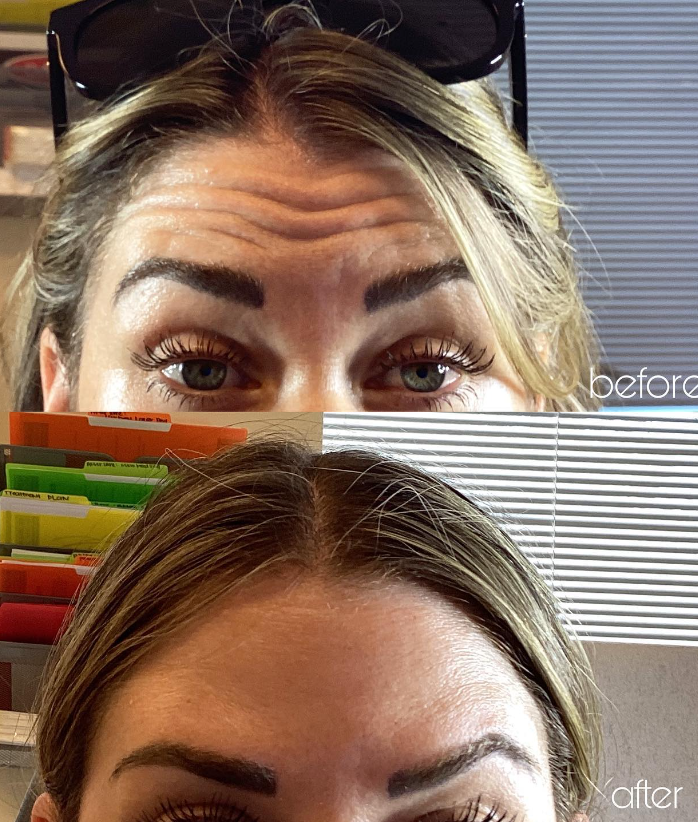
Botox before and after eyes
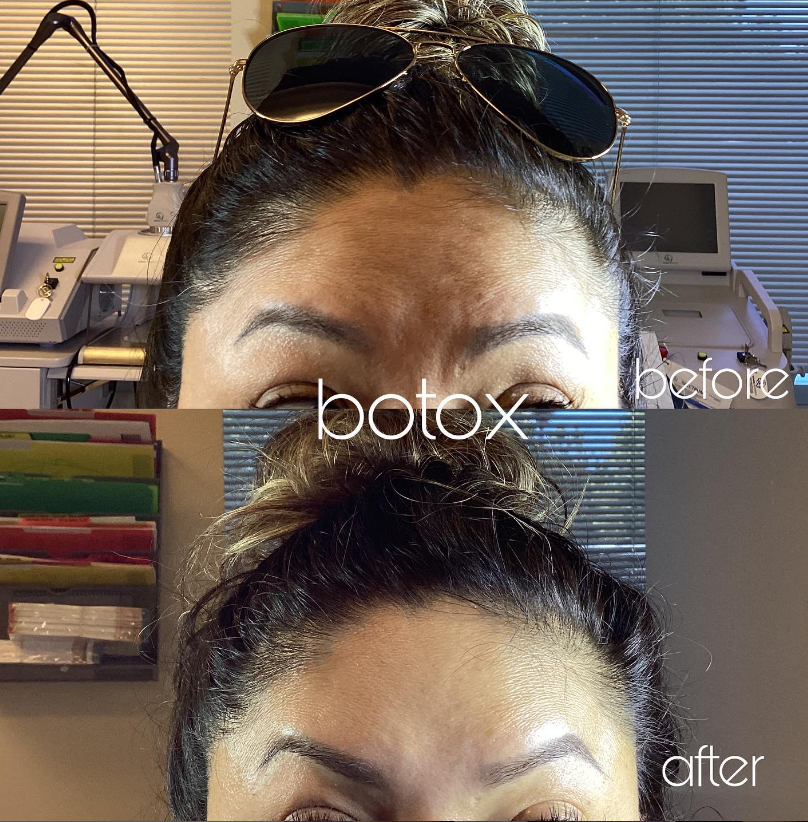
Botox forehead before and after
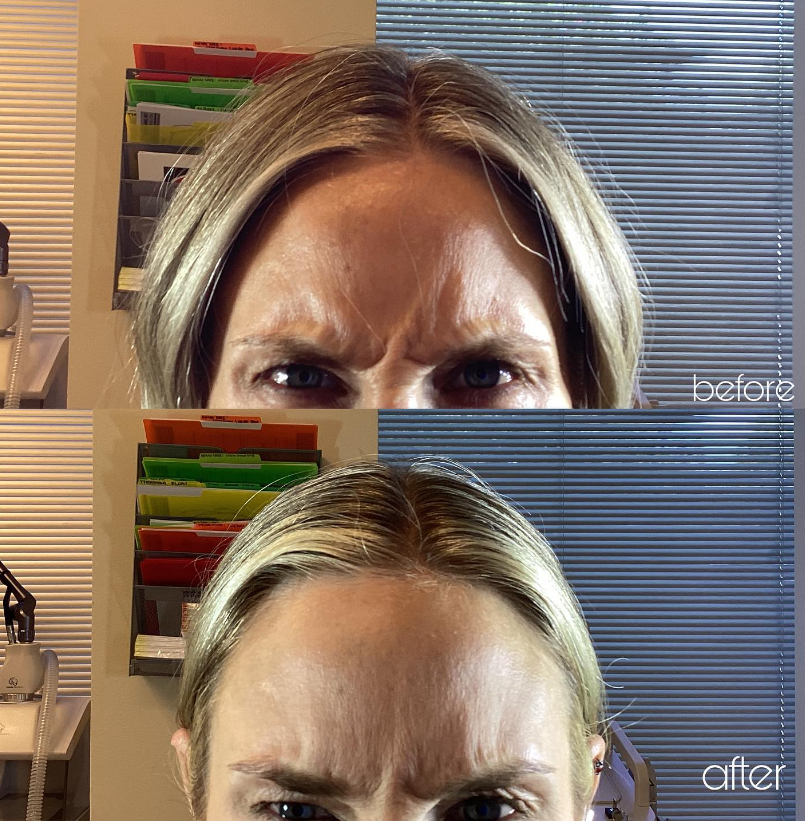
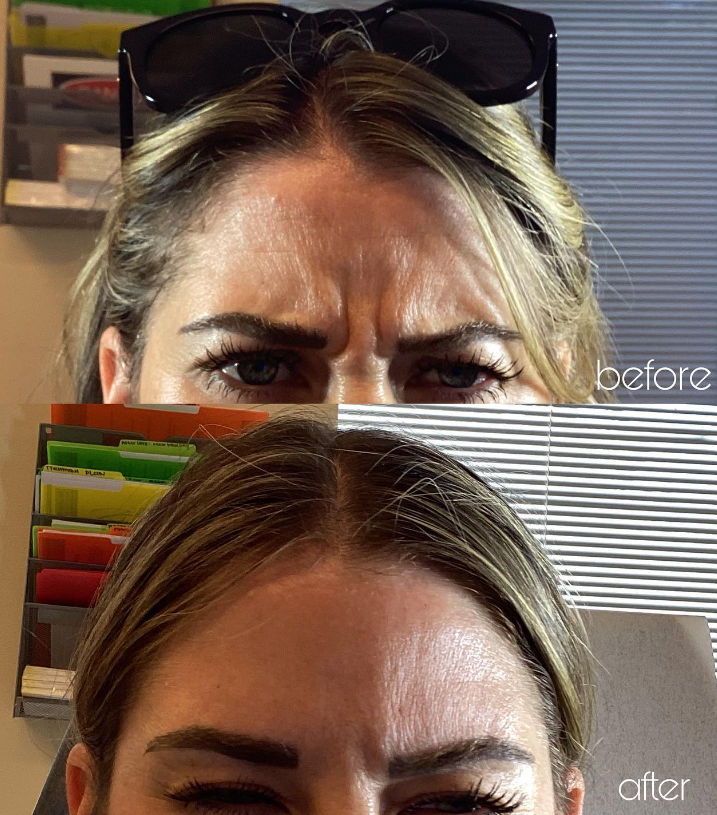
Botox Crow’s feet before and after
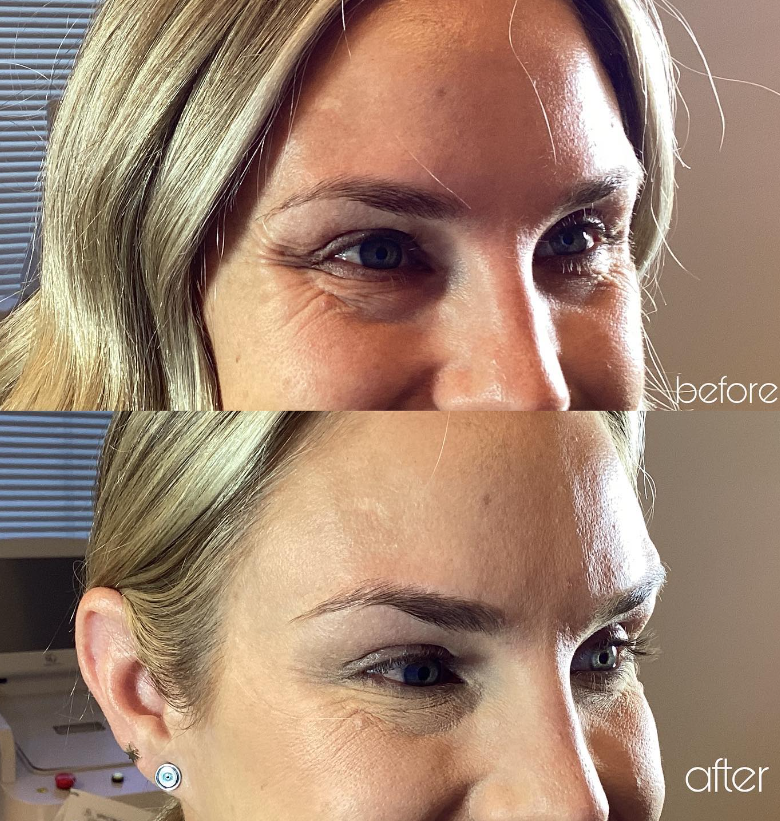
Why consider Botox?
What are the pre-care instructions for Botox?
What are the post-procedure instructions for Botox?
How long does the Botox treatment last?
How long will it take to get the Botox results?
Dysport vs Botox
Xeomin vs Botox
Botox specials
Why should I choose you for Botox in Livermore? What distinguishes your services?
Where can I check the prices of all the treatments you offer and their prices?
About Livermore
Patient Reviews
I have been using the services of Dr Anuja Garg as my physician and weight loss specialist since March 2024.
We decided to follow the clinic weight loss program after taking all the necessary precautions. 10 weeks in; I have lost rather effortlessly 55 pounds.
I fully trust Dr Garg and her team to monitor my health during my weight loss journey and beyond.
I highly recommend the clinic.
Overall a good experience, I will recommend this if you want to get medicals done for immigration

Dr. Garg is amazing! I've done two facial PRP microneedling sessions, and I'm in the middle of laser hair removal. Before all sessions, Dr. Garg explains in detail what she's going to do and how it's going to work. My skin has healed so nicely after the microneedling sessions. My skin is soft and smooth; and the hair growth is definitely thinning. I recommend Dr. Garg for any of your skin needs!
I am happy with the services rendered at this business. The doc was caring and nice. I highly recommend this business.
Wonderful.
Dr Garg and team were very helpful and professional in helping us navigate with our parents immigration documentation.
Dr Anuja and her team were incredibly helpful in completing all the USCIS exam formalities in a few days. I walked away with the final reports after just a few days. I would highly recommend her
Visited here for the medical exam required for immigration (I-693) for my whole family. She seems to be very experienced in this and knows all the steps and details required.
Dr. Garg is very thorough with the I-693 forms. She made sure that I was compliant to avoid RFE and explained to me in detail the requirements. Having a
Had the laser h2o facial resurfacing done back in January and am very happy with the results.
I am very pleased with my MLS laser therapy for my knee. I had pain for almost 2 years and went for different treatments including physical therapy and


